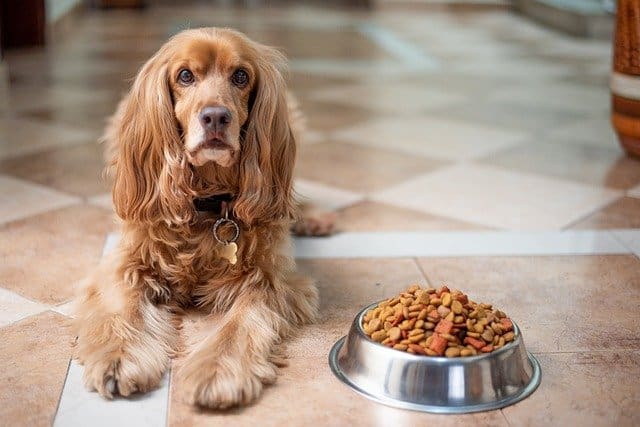
When it comes to feeding a diabetic dog, there are some rules that we must follow, starting with which foods to avoid and which, instead, must necessarily be present.
There are several diseases and disorders that, a priori, we tend not to associate with the animal world. However, nothing is further from reality: an example is represented by diabetes in dogs. When it comes to feeding a diabetic dog there are some rules to follow if we want to make sure that our pet can live with his disease in the best possible way.
Diabetic dog: how to diagnose
Just like humans, canine diabetes is due to a defect in insulin production. This hormone is responsible for ensuring that glucose (the main source of energy for cells) is transported and processed in the correct way.
Whether it is because the body is unable to synthesize insulin, or because it cannot use it, the direct consequence of this is a build-up of glucose in the bloodstream. This phenomenon causes the cells not to have enough energy to perform their tasks , in addition to raising the level of sugar in the blood above normal levels.
Middle-aged or older dogs are those with a greater predisposition to suffer from diabetes . Additionally, there are some breeds that exhibit a greater propensity than others. In any case, the symptoms are the same:
- Our dog drinks water very often and, consequently, urinates very frequently.
- Has an increase in appetite.
- He looks tired and drowsy.
If your veterinarian has confirmed the diagnosis of diabetes in your pet, he will certainly provide you with some dietary rules that you will need to introduce into his daily diet.
Presence of fiber in the diet of a diabetic dog
One of the components that must be part of a diabetic dog’s diet is fiber. This component, when taken in large quantities, acts as a “brake”, preventing glucose levels from rising upwards during the process of breaking down carbon hydrates .
Among the foods that have a high content of dietary fiber , we find cereals (rice, wheat or oats) and soy. However, excess fiber can cause intestinal problems for our pet and, consequently, moderate consumption is recommended.
If the vet deems it convenient, we can supplement this high-fiber diet with the intake of vitamins B-6, E and C : in fact, they too help to keep glucose levels under control.
Foods that must be avoided
Among the foods that must disappear (or reduce in their proportions) from the diet of the diabetic dog, there are those that contain easily assimilable carbon hydrates and sugars. These types of compounds are present in some food colors and quickly turn into glucose, which will continue to build up.
If you plan on rewarding your dog with a snack, first make sure it does not contain this type of sugar. In addition, you must also pay attention to the fruits, because some contain large amounts of fructose , another type of easily assimilated sugar.
Some useful tips
When we talk about diet, we are not referring exclusively to its content. In the case of diabetic dogs, “when” and “how much” are also important. A good choice is to divide our pet’s daily diet into smaller rations and to always respect a certain time.
This will make digestion easier for the dog, helping the correct absorption of glucose. However, if you have any doubts about which diet to give your dog, you can also resort to feed specifically designed for diabetic animals.
Another aspect that marks a point in favor of your pet’s health is exercise, as long as it is constant and moderate. In this case, the exercise must always follow the same regularity as the feeding. In this way, physical activity will help ensure that glucose levels are always kept constant.






